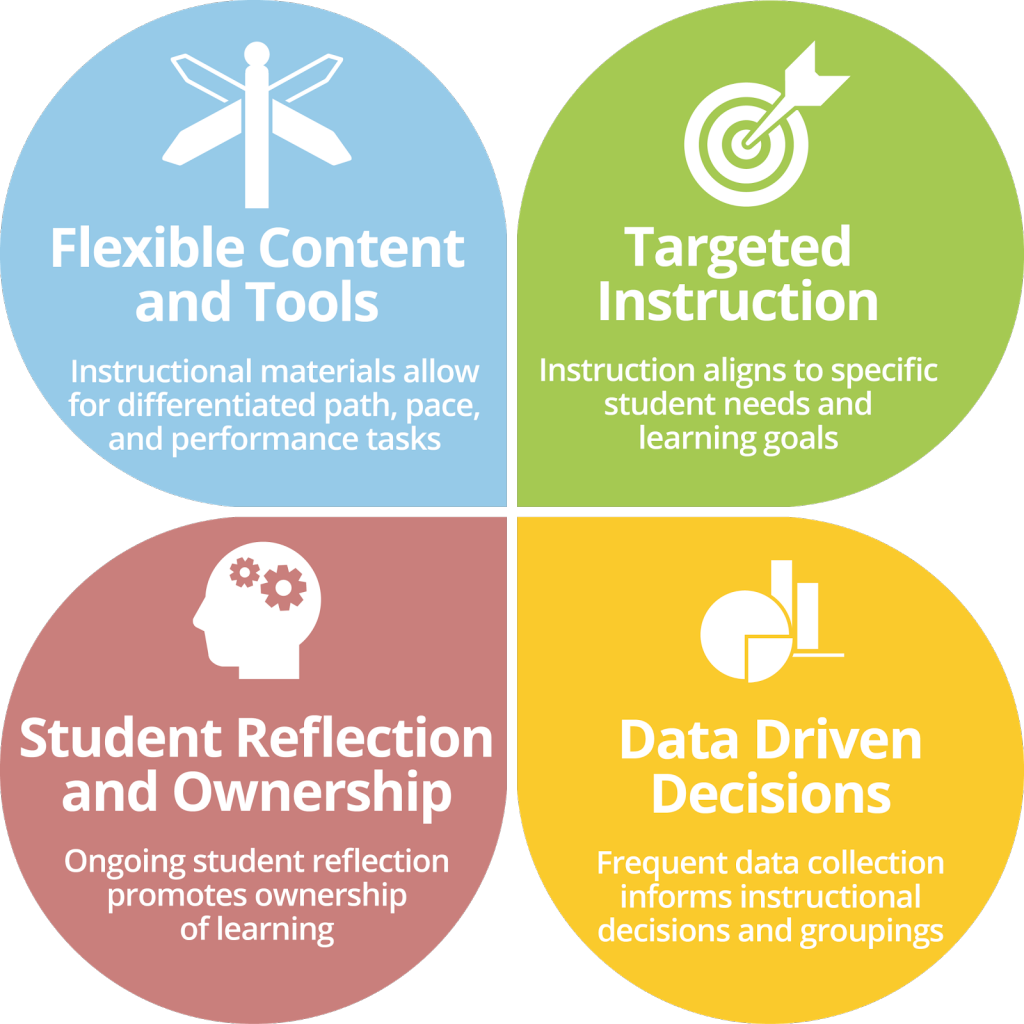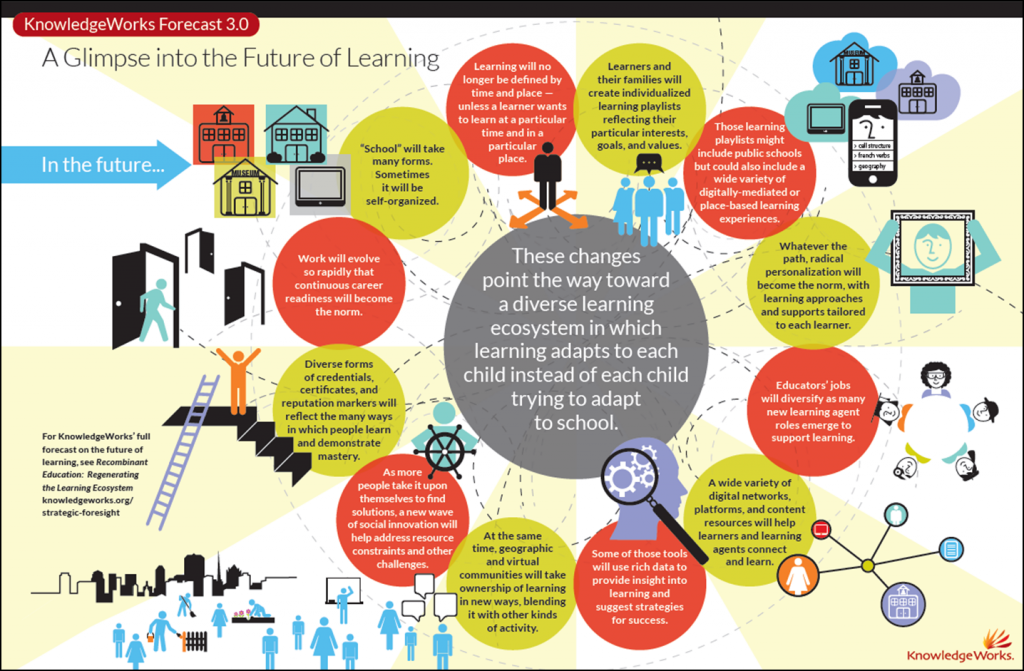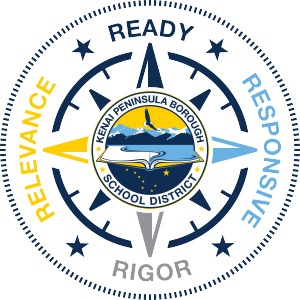
The most commonly accepted definition, from International Association for K-12 Online Learning (iNACOL), is:
Personalized Learning (PL) is tailoring learning for each student’s strengths, needs and interests—including enabling student voice and choice in what, how, when, and where they learn—to provide flexibility and supports to ensure mastery at the highest standards possible.
Personalized learning is the structuring schools, classrooms, and instruction so we can better respond to the individual needs of students, instead of expecting students to fit the current mold or adapt to structures that may not be successful for them. Many of our teachers implement elements of personalized learning in their classrooms right now. Key elements include:
- Flexible Content and Tools: Instructional materials allow for differentiated path, pace, and performance tasks
- Targeted Instruction: Instruction aligns to specific student needs and learning goals
- Data Driven Decisions: Frequent data collection informs instructional decisions and groupings
- Student Reflection and Ownership: Ongoing student reflection promotes ownership of learning
Personalized learning is about continuing and improving our shift away from the one-size-fits-all, factory model of education to better prepare students for the jobs and needs of their future. We want to directly connect students to rigorous learning that is relevant and prepares them for life, college, and careers they will encounter after high school, and create a system that supports this approach.
“The modern concept of personalized learning leverages technology tools, classroom organization, student ownership, and redefines the terms teaching and learning to help teachers truly meet the individual needs of students in their classrooms. Through this process, we create new classroom environments that allow students to do some work at their own pace, path and place, and some work directly with small group instruction from the teacher, which allows teachers to better focus instruction and target student needs.” –Kenai Peninsula Borough School District

